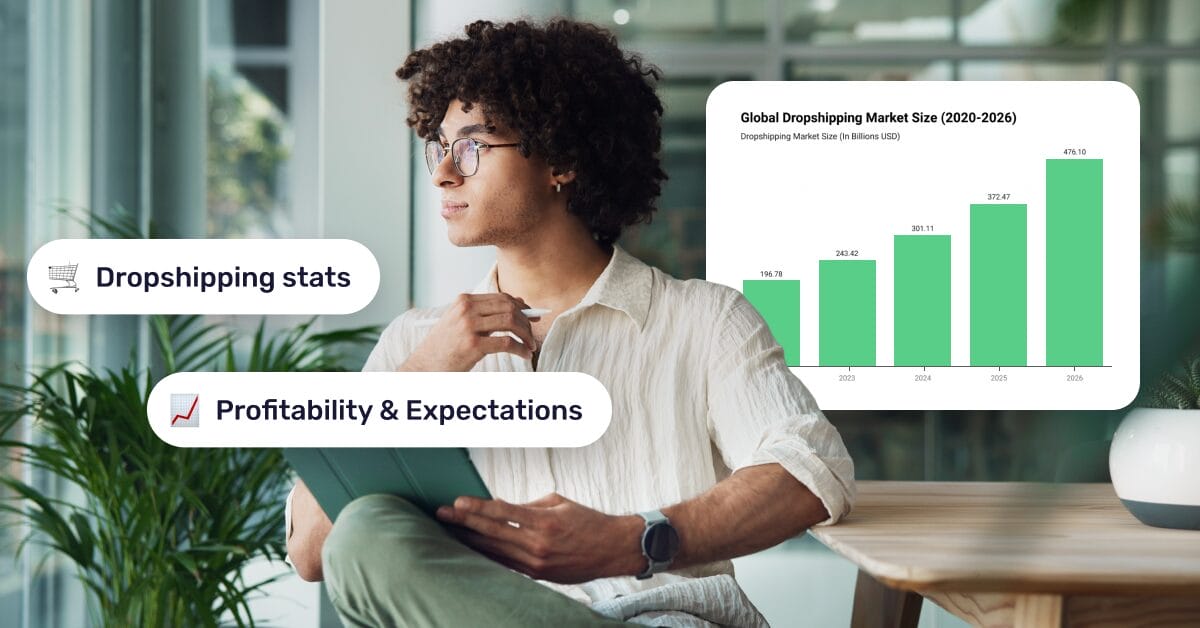If you’ve spent more than five minutes online, you’ve probably heard one or two things about dropshipping. This e-commerce model has exploded in recent years, and everyone’s giving it a chance.
But why should you care about dropshipping statistics? Because the right numbers give context, authority, and direction. And the more informed you are, the easier it is to separate hype from reality.
That’s why we’ve pulled together the most up-to-date dropshipping stats, data, and trends for 2025. Plus, we’ll show you typical dropshipping challenges and how to face them. For instance, AutoDS helps sellers across the entire dropshipping workflow, automating each step for smoother order fulfillment, real-time inventory monitoring, and more.
Dropshipping is booming. The global market is projected to reach $1 trillion by 2030, growing at a CAGR of 22%, making it one of the fastest-growing e-commerce models.
Profit margins are real but competitive. Average dropshipping margins sit around 10%-20%, though niches like premium goods or tech can reach 30%-40%. Still, 80%-90% of new dropshippers fail in the first year due to poor supplier choices or weak execution.
Consumer expectations are shifting. Shoppers increasingly demand fast, reliable shipping and sustainable products. Reviews, return policies, and discounts rank among the top purchase drivers.
Automation is the game-changer. Tools like AutoDS simplify your workflow, automate repetitive tasks, and help you scale smarter.
Dropshipping Market Statistics
Before we dive into the super-specific dropshipping statistics, let’s zoom out and look at the big picture. How large is the dropshipping market right now? Where is it headed in the next few years? And which regions are leading the change? Let’s see.
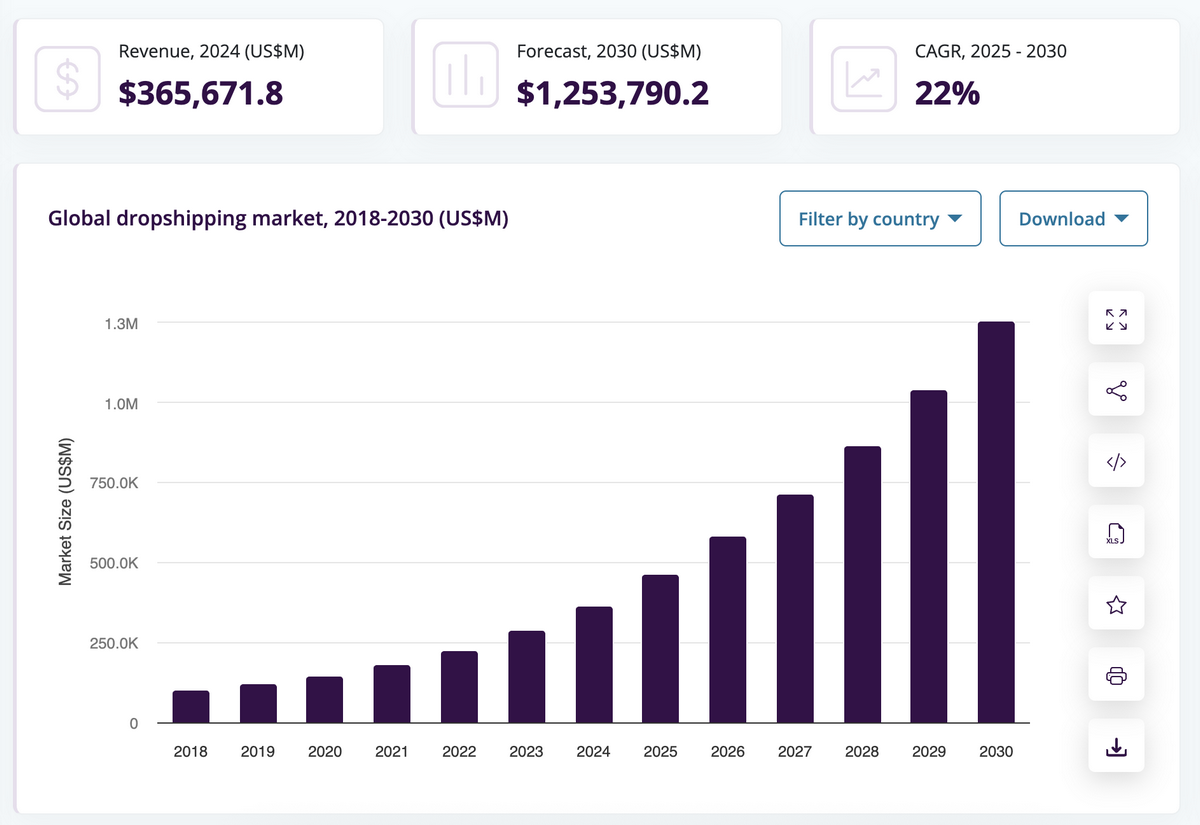
According to Grand View Research, the market was valued at $365.7 billion in 2024, is expected to reach $464 billion by the end of 2025, and is projected to increase to $1.254 trillion by 2030. Global dropshipping is growing at a CAGR (compound annual growth rate) of around 22% from 2025 to 2030.
Now, in terms of the actual adoption of dropshipping among online sellers, stats indicate that by January 2025, over 27% of retailers use this model for fulfillment (GrowthDevil). This means around 1 million dropshippers worldwide (GrowthDevil).
Everyone’s already jumping on the dropshipping wagon. Why not you? Try AutoDS and see how automation can help you grow fast 👉Launch in 5 minutes for just $1
But what happens specifically in each region? According to Grand View Research:
- North America leads the dropshipping market with a 35.8% share of the global market, and is projected to grow at a 23.5% CAGR through 2030.
- Asia-Pacific follows with a 35.2% share, and is expected to reach a 25.7% CAGR from 2024 to 2030, taking the lead from then on.
- Europe is in third place, with 21% of global share, and an expected CAGR of 20.8% from 2024 to 2030.
- Latin America represented roughly 4.8% of the global dropshipping market, with a CAGR of 18.4% through 2030.
- Finally, the Middle East and Africa represent only a 3.6% share of the global dropshipping market, with an estimated CAGR of 17.9% from 2024 to 2030.
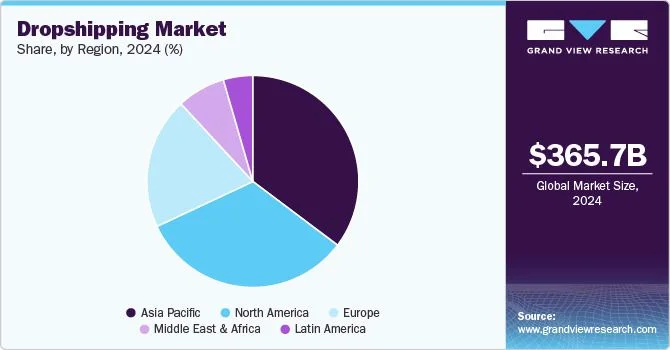
Dropshipping Business & Revenue Stats
Now, let’s look at the business side of things. We’ve already established that dropshipping is trending big time worldwide, but what does it actually look like in practice? How does it translate into actual profits, income ranges, and platform usage?
According to TrueProfit, the average profit margin in dropshipping ranges from 10% to 30%. Profitable niches (like premium products and tech) and smart pricing strategies can push margins even higher, with some sellers hitting +30%.
But, how does that translate to actual money? The same source states that:
- Beginners can earn, on average, between $0 and $5,000 per month
- Seasoned dropshippers can make between $10,000 and $50,000 a month.
Specifically on eBay, GrowthDevil adds that:
- The top 10% of dropshippers earn around $7K+ a month, which equals $90K+yearly.
- 25% of dropshippers earn over $1K monthly. On average, an eBay dropshipper makes at least $2.5 per sale.
It all comes down to niche selection, marketing skills, platform choice, automation, and supplier quality.
But dropshippers are not the only ones taking advantage of this model. According to McFayden Digital, suppliers who work with dropshippers earn, on average, 18.33% more profit than those relying on traditional distribution channels.
So, where are these dropshippers, exactly? Shopify’s annual revenue climbed to almost $9 billion in 2024, marking a 25.8% yearly increase (Uptek). At the same time, the share of Shopify stores running on a dropshipping model jumped from 5.2% to 12.8% of the platform’s total stores (Yaguara), and 10%+ of online stores use this platform (XGenious).
And the #1 most used tool? WooCommerce, with 39% of all e-commerce stores (XGenious).
🆕 Beginner’s Tip: If you’re thinking about dropshipping on Shopify but don’t know where to start, great news. With AutoDS’s AI-Built Shopify Store you can get started in just two minutes with ready-to-sell pages and full automation.
Consumer Behavior Statistics
Success in dropshipping doesn’t just depend on the seller. It also comes down to what happens on the other side: the customer. Understanding how consumers behave and what drives buying decisions is key to delivering a customer experience that sells.
First things first. When buying online, it’s all about shipping. 66% of online shoppers prefer to buy from brands with more than one shipping option (GrowthDevil).
Moreover, 62% of online buyers expect their orders to arrive in less than three business days (Shopify) and 42% expect two-day shipping when making a purchase, impacting their buying decision (Ware2Go).
And when it comes to shipping costs…
- 80% of customers expect free shipping for high-value purchases (Shopify).
- 66% expect free shipping on all online orders (Shopify).
- Almost 50% of shoppers choose where to buy based on free delivery (GrowthDevil)
In fact, this is so important that, according to Statista, the primary reason for shoppers to abandon a cart is expensive shipping, and the third reason is slow delivery.
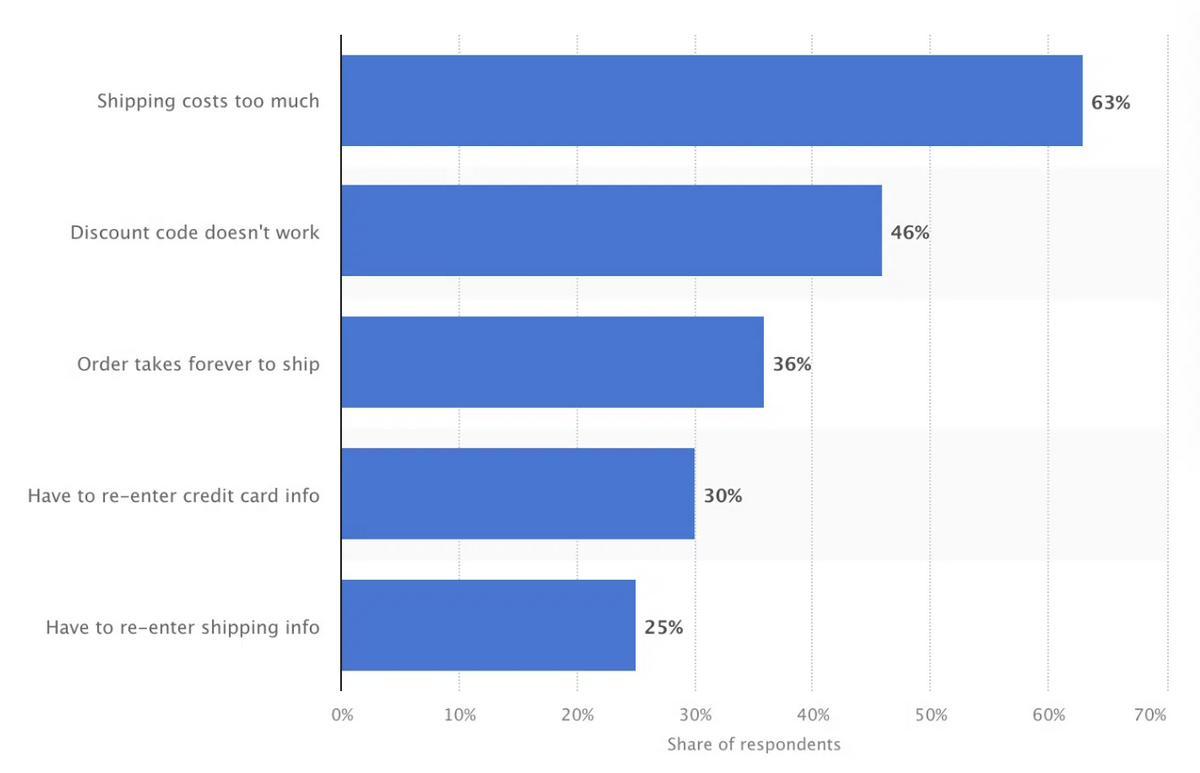
But that’s not the only reason an online shopper decides to make a purchase. Let’s hear it for another one of online shopping’s best friends: customer reviews. They play a decisive role when someone’s not sure whether to buy or not. Let’s see:
- Reviews are trusted 12 times more than a listing’s description (Martech Zone).
- When a business has bad reviews, it makes 86% of buyers hesitate to make the purchase (Martech Zone).
- Having 50 reviews or more can increase product page conversion rates by almost 5% (Martech Zone).
- Customer reviews make up about 30% of the top reasons why people choose to shop online (GrowthDevil).
Other factors that influence purchase decisions besides shipping and reviews? According to GrowthDevil, discounts and coupons make up 38% of the top reasons why someone decides to buy (second most important when making purchase decisions), followed by an easy return policy with 33.5% (GrowthDevil), and an easy checkout process with 27.9%. Social media engagement also boosts trust, with 19.3% of consumers saying it influences their buying decisions.
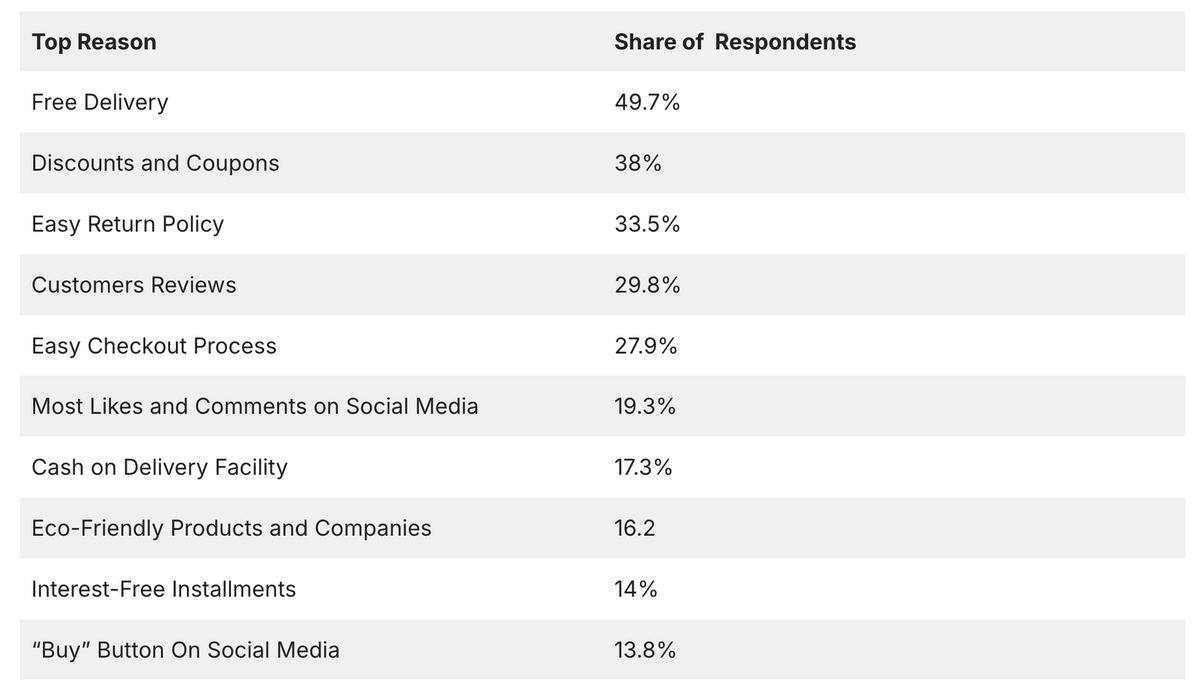
It’s clear: people are shopping online. But what are they actually buying? According to Grand View Research, the best dropshipping niches are:
- Fashion
- Furniture and appliances
- Food and personal care
- Electronics and media
- Toys, hobbies, and DIY
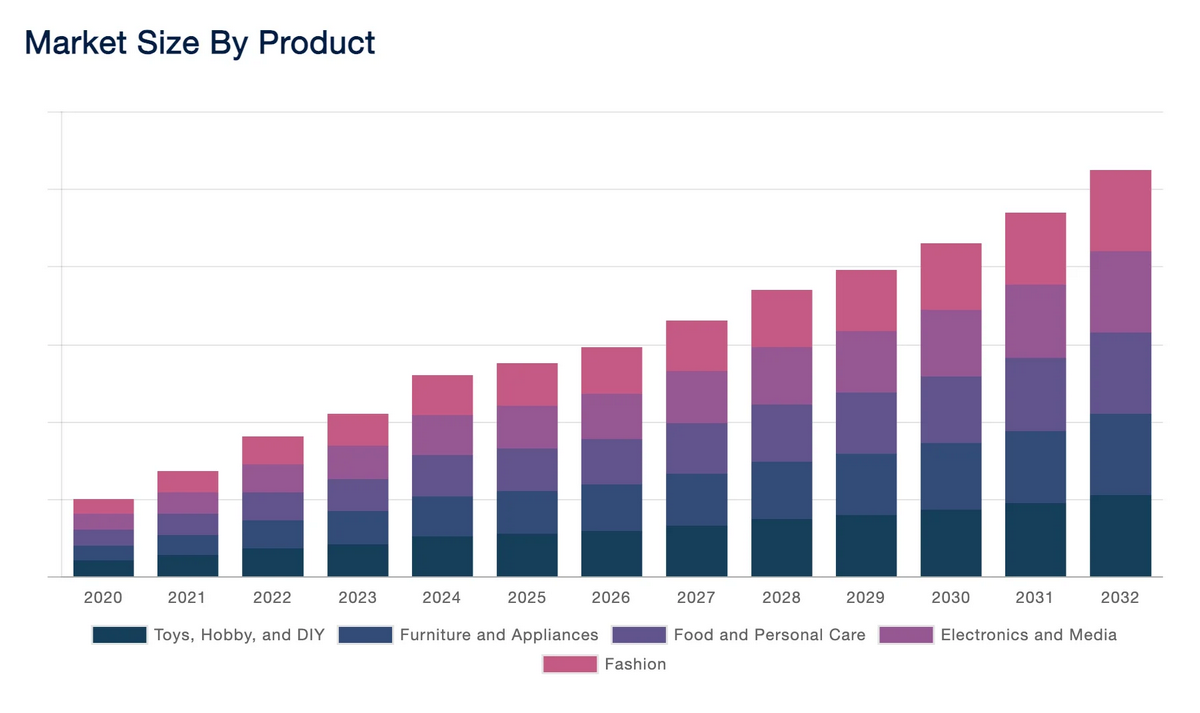
Multiple sources agree that Fashion takes the lead with a 26% market share of online stores (GrowthDevil), and a CAGR of 34% by 2031(Grand View Research). It’s followed by Home & Appliances, with a 9.9% share of stores, Beauty & Fitness with 8.4%, and Sports with 8.4% as well (GrowthDevil).
🔍 Research Tip: Want to prioritize items in top niches with fast shipping and high quality? With AutoDS’s product sourcing tools, you can instantly filter by niche, shipping speed, and supplier ratings, making it easier to pick winning products
Lastly, let’s quickly review some demographics. What age are these people who are buying online? You’ve probably guessed it: mostly, Millennials. According to Statista, 20% of online buyers are 25-34, 17% are 35-44, and 15% are 45-54. They are followed by the age group 55-64 (14.6%), and then +65 (14.4%). Of course, the younger ones are still the group with the lowest purchasing power, with 13% for 18-24 and 5% for those under 18 years old.
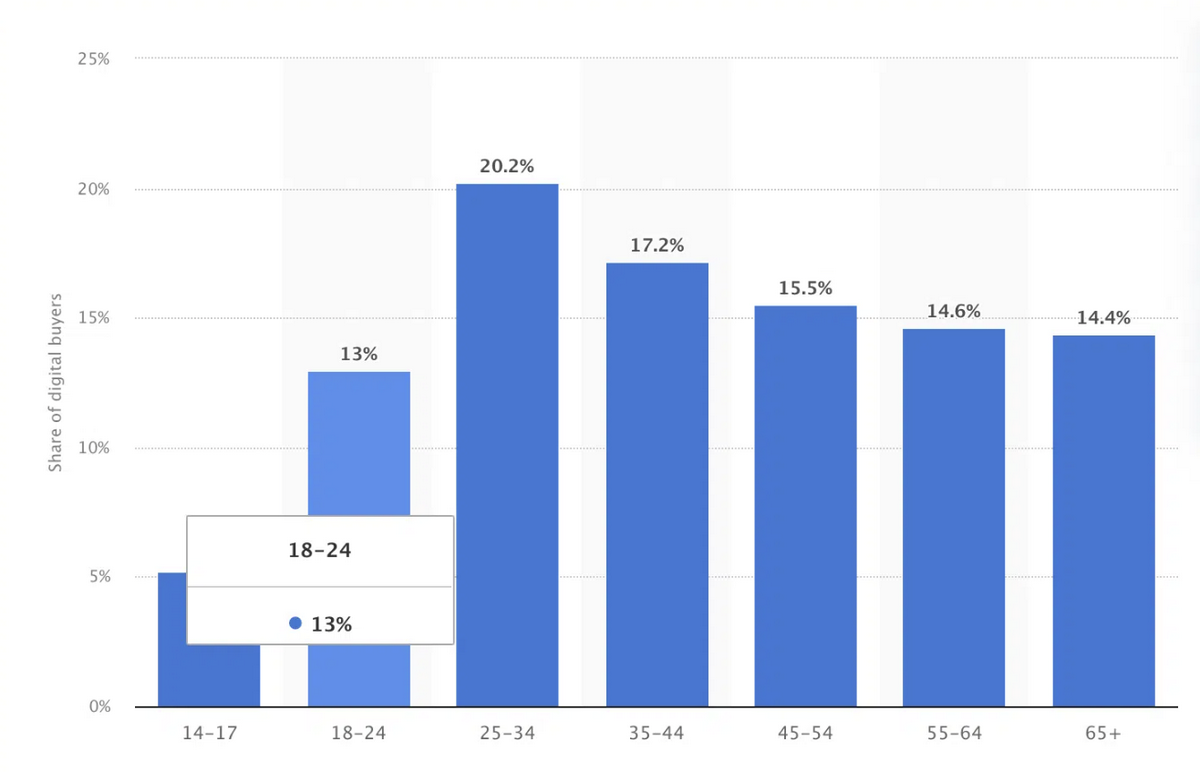
Supplier & Shipping Statistics
Time to get technical, but in a good way. In dropshipping, your suppliers and delivery speed shape your brand’s reputation, profit potential, and customer satisfaction. In that context, which suppliers are leading the market? Let’s see.
In the US, Amazon leads with 37.6% of market share, followed by Walmart with 6.4%, eBay with 3%, Target with 1.9%, Home Depot with 1.9%, Costco with 1.5%, and more (Statista).
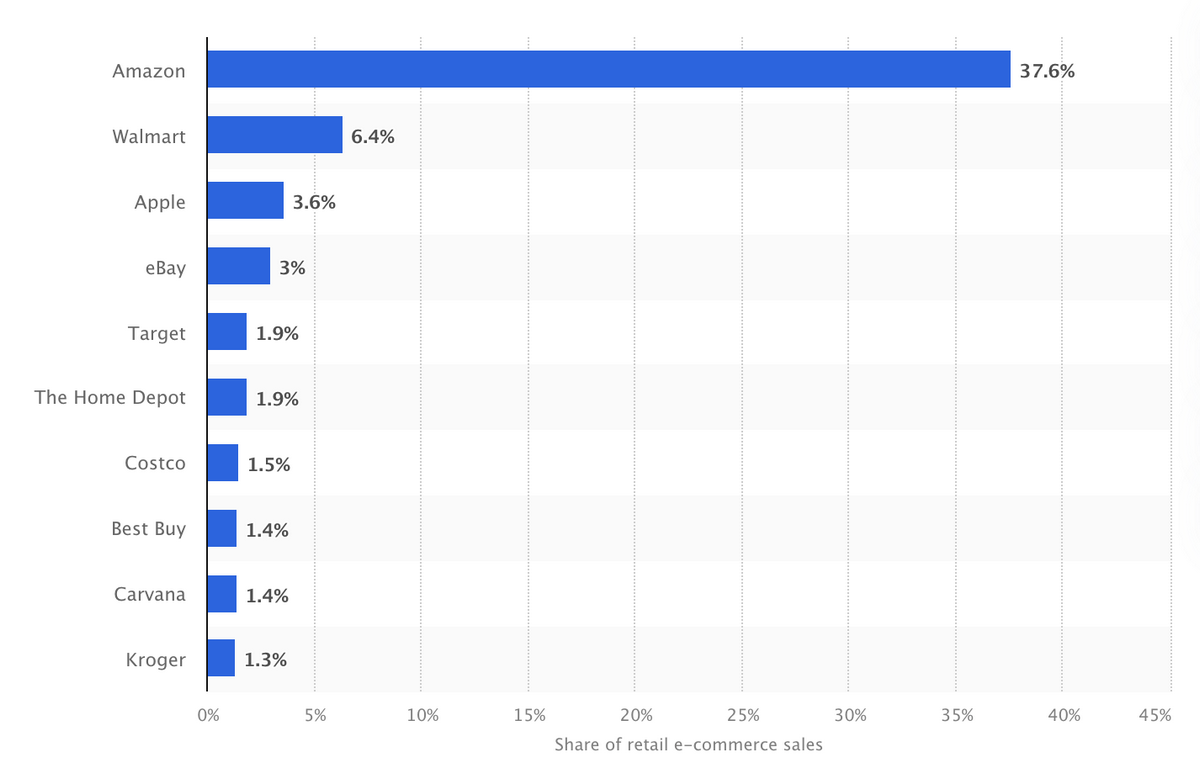
That said, Amazon’s sales are projected to keep growing in the US, reaching $540.3 billion by the end of 2025, increasing its market share from 37% to 40.9% (E-Marketer).
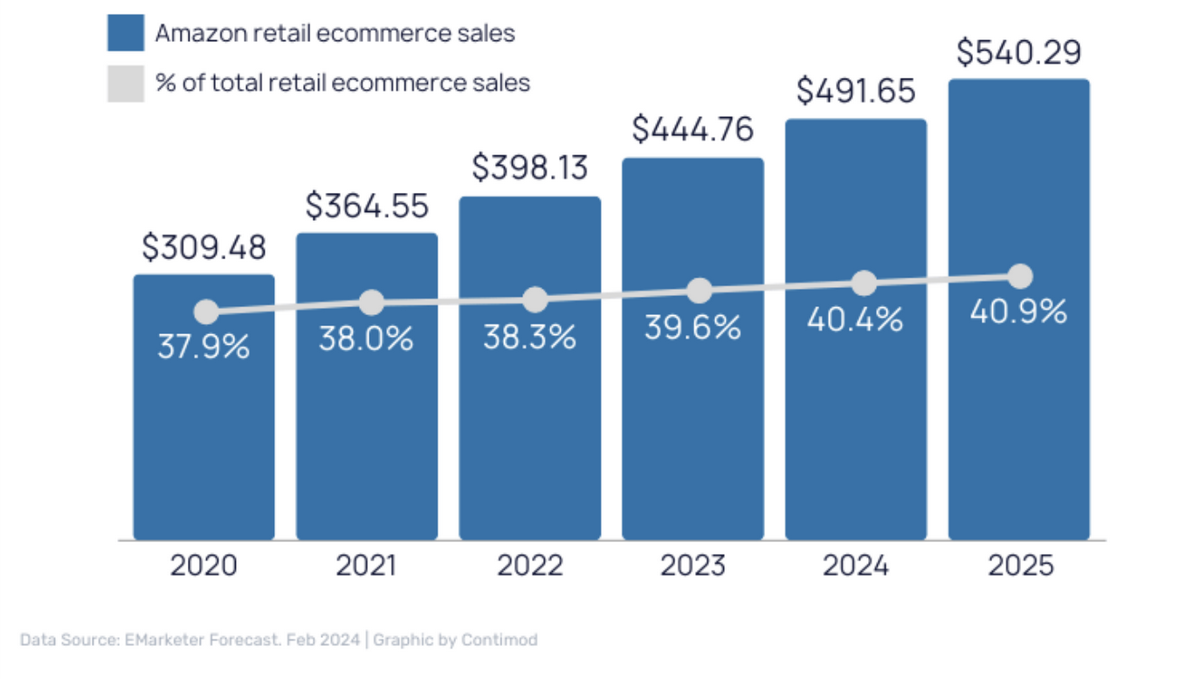
While there are no official global stats, let’s analyze the biggest worldwide suppliers in terms of monthly traffic. Globally, Amazon takes the lead as well. Let’s see the numbers of July 2025:
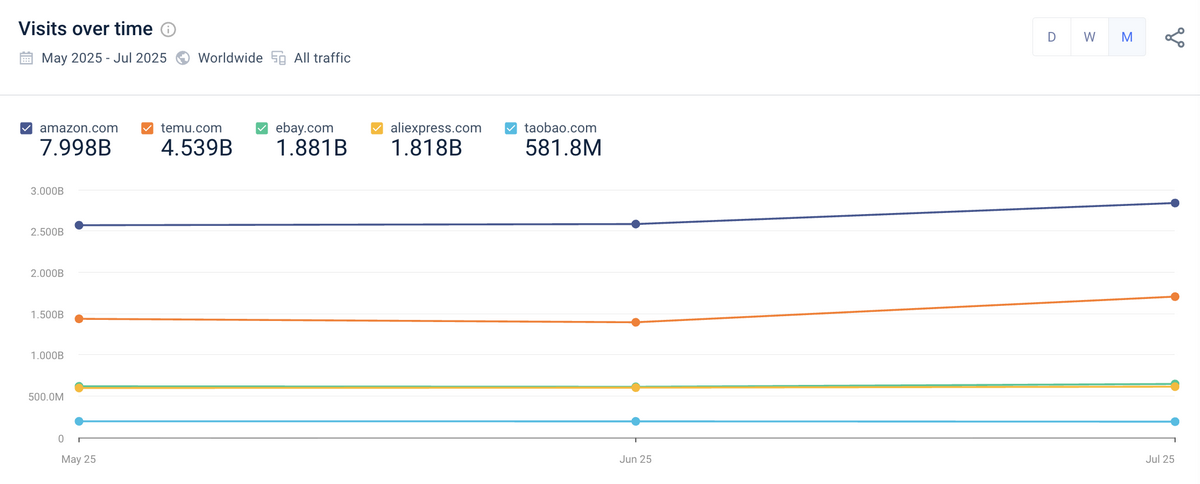
- Amazon – 2.840 billion monthly visitors
- Temu – 1.706 billion monthly visitors
- eBay – 648.1 million monthly visitors
- AliExpress – 615.5 million monthly visitors
- Taobao (from China) – 581.8 million monthly visitors
- Target – 545.6 million monthly visitors
- Walmart – 519.1 million monthly visitors
- Etsy – 387.3 million monthly visitors
- Costco – 295.5 million monthly visitors
- Wayfair – 271.1 million monthly visitors
📦 Supplier’s Tip: Don’t know which supplier to choose? No worries—AutoDS supports all of them. This means you can import products in one click, optimize your listings, monitor stock and price changes, and automate orders, all from the same place.
When it comes to estimated shipping times, Project 44 reports that the global average delivery time improved to 3.7 days as of November 2024, which is a 27% improvement from November 2023.
But how realistic is it to actually achieve two-day delivery like customers expect? It depends. The global picture looks like this, according to Red Stag Fulfillment:
- North America leads in two-day delivery, with 78% of packages arriving in 48 hours or less.
- Europe comes next, with 58% of packages delivered within two days across the continent. But it’s not all the same for the entire region. Germany and Netherlands, for example, hit 70%+ two-day delivery rates, the UK averages around 68%, and Eastern European countries fall behind at just 40%-50%.
- The Asia-Pacific region is showing a significant growth in terms of logistics, with an average of 61% of packages delivered within two days. But, again, it varies by country. Singapore and South Korea lead the pack at 80%+. And the number goes down for India and Indonesia, with rates closer to 45%-55%.
- Latin America has a 42% two-delivery rate. Brazil leads with 48%, followed by Mexico with 45%.
- The Middle East and Africa have an average two-day delivery rate of 38%. But there are bright spots: the UAE peaks at 65% and South Africa reaches 41%. Other countries in the region typically fall below the global average.
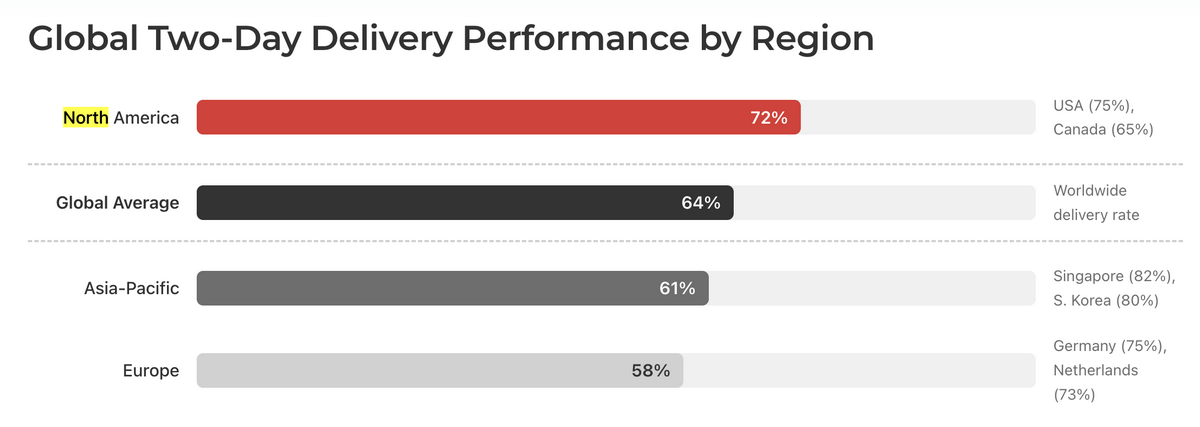
Marketing & Platform Statistics
Want to know where dropshippers are actually making sales and how they’re getting traffic? From the platforms powering their stores to the ads driving conversion, these numbers reveal which channels work and how customers are finding products.
Let’s start with the basics: where are dropshippers selling? What platforms are they choosing to host their stores?
Dropshipping Store Builders Stats
First, let’s start with store builders. WooCommerce takes the lead with 39% of the market share (XGenious). This is followed by Shopify, with 10%+ of online stores worldwide (XGenious). Specifically, 62.8% of total Shopify stores are located in the US, followed by Canada with 8% and Australia with 7.4% (Webinarcare).
These are followed by Wix, with 7,3% of market share, and Squarespace, with 4.9% (XGenious).
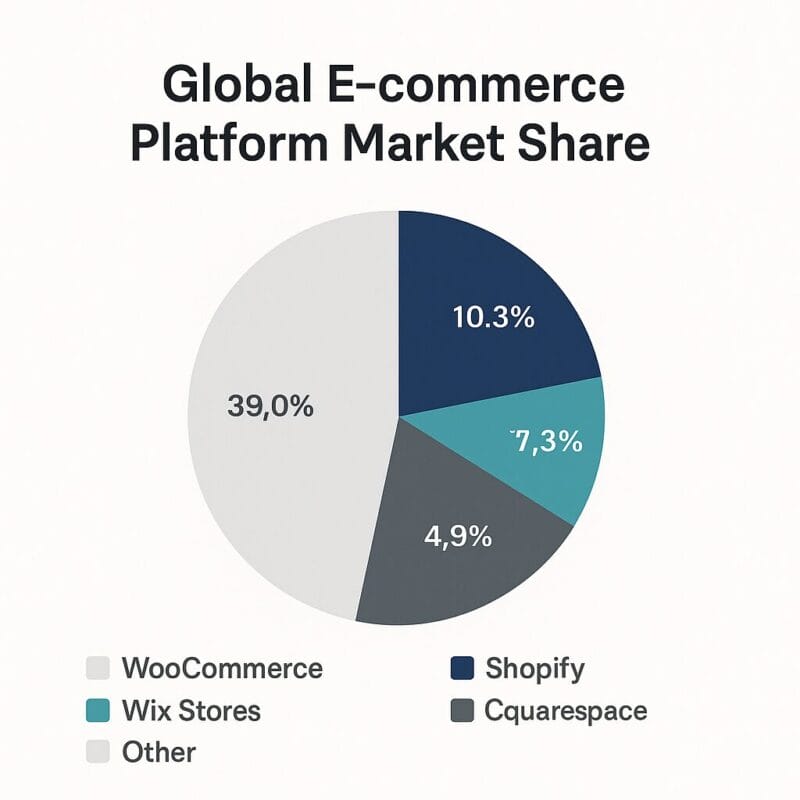
Marketplaces Stats
Then, there are the old, good marketplaces. In terms of sellers, eBay leads in 2025 with 17.6 million seller accounts and 134 million buyers (Red Stag Fulfillment). It peaked at 25 million in 2014, but has since declined steadily, probably due to new marketplaces emerging all around the world. Specifically, 31% of sellers are in the US, 29% in the UK, 15% in Germany, 12% in China, 4% in Australia, and the remaining is divided between other markets (Red Stag Fulfillment).
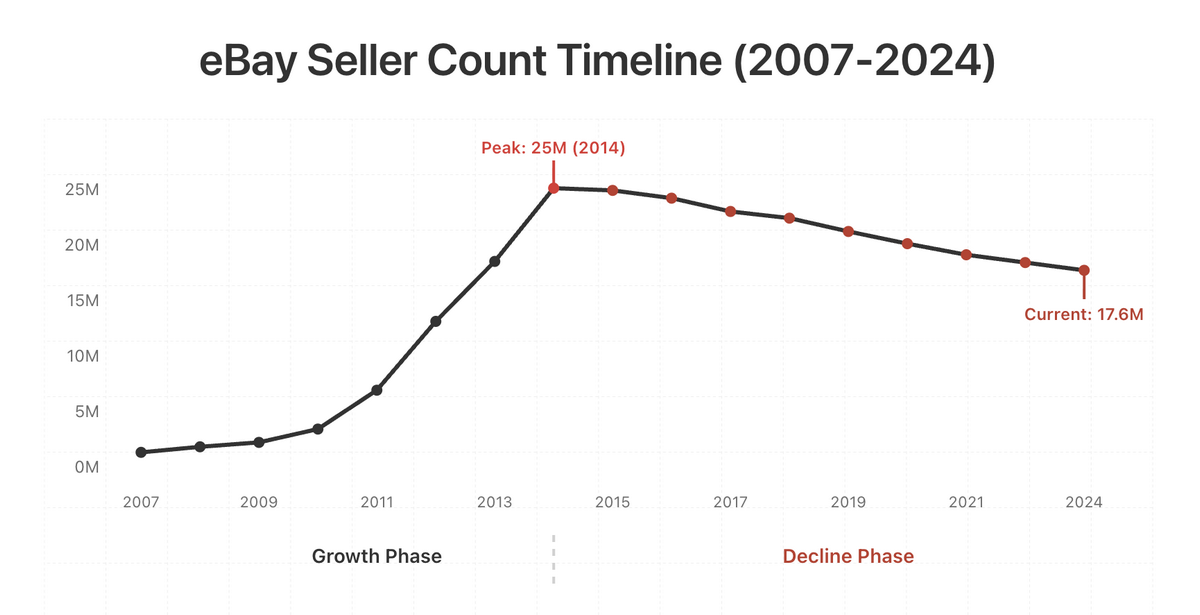
The second biggest marketplace is Amazon, with 9.7 million sellers globally (1.1 million of them are located in the US) and 310 million buyers (Business Dasher). They are mostly located the US (37.82%), the UK (9.54%), Germany (8.30%), Italy (7.36%), and France (7.19%). In Asia, India leads with 6.99%, followed by Japan with 5.89%.
💡 Pro Tip: Yes—Amazon has way fewer sellers than eBay, but three times more buyers. Among other reasons, this is probably due to Amazon’s strict restrictions on seller accounts, specifically for dropshipping. With Fulfilled by AutoDS, you can process orders through AutoDS’s own accounts, helping you stay compliant.
Specifically, third-party sellers now account for over 60% of all units sold on Amazon, up from just 27% in 2004 (Marketplace Pulse). This shows how much independent entrepreneurs have fueled the platform. Plus, 34% of them use dropshipping as their fulfillment method (Torchbankz).
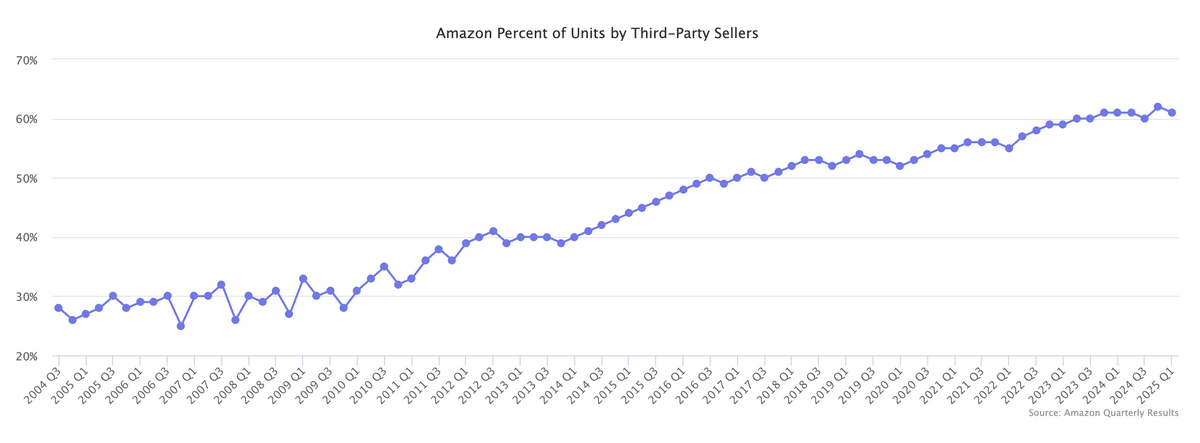
Etsy is another popular marketplace, with 5.40+ million sellers by 2025 (Marketplace Pulse) and 95.5 million active buyers (Etsy). This number has been steadily increasing since 2012, reaching its peak in 2023 with almost 8 million sellers, before dipping to the latest number by early 2025.
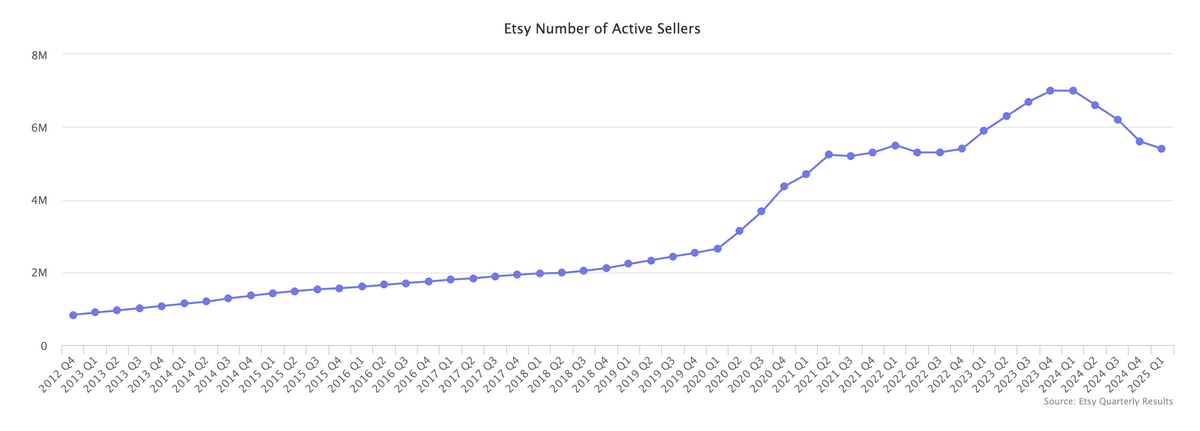
Another major platform is AliExpress, from the Alibaba group. While there’s no official data for active sellers, evidence suggests that it’s one of the biggest marketplaces in the world. With 600+ million monthly visits, it’s one of the most visited e-commerce sites (SimilarWeb). Moreover, the app hit +8 million downloads, +130% over the previous year (TechJury).
Lastly, we can also see its growth from the Alibaba numbers: according to Statista, its annual revenue soared from 2015 to 2025, from ¥76 billion to ¥996 billion. In US dollars, this translates to $10 billion to $137 billion in revenue.
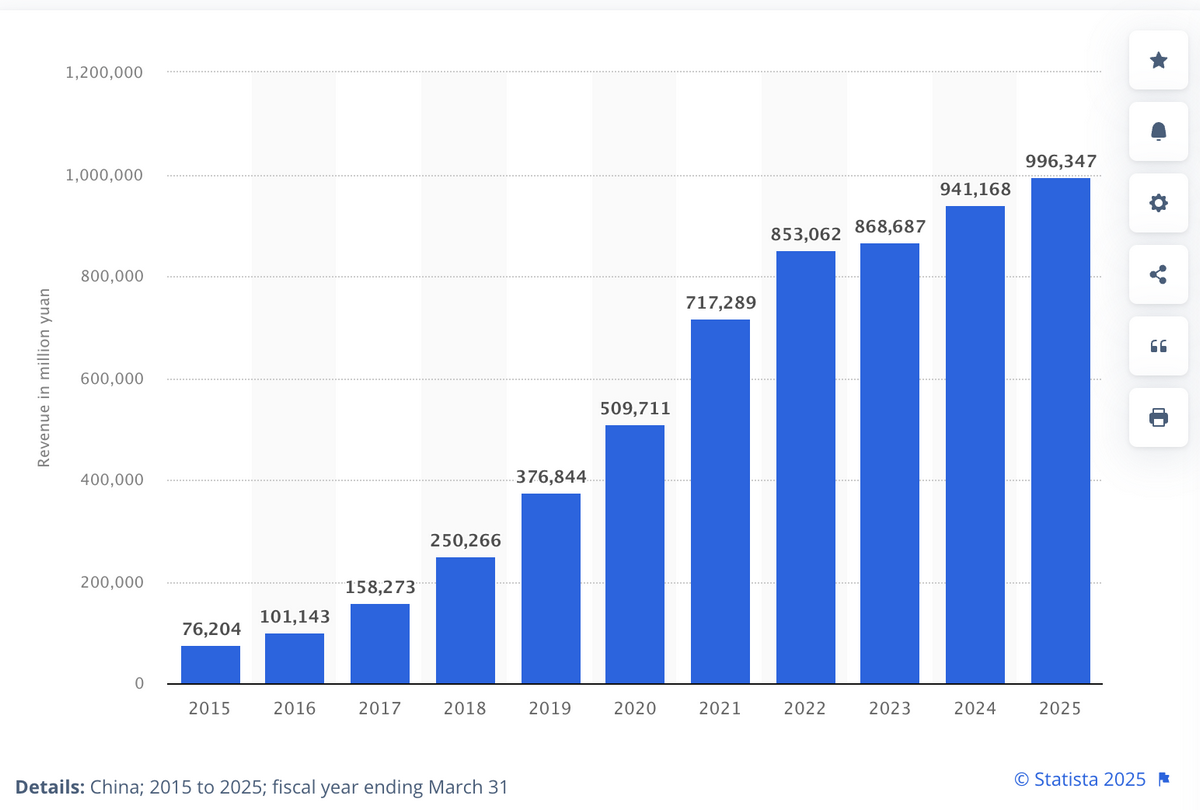
Social Commerce Stats
And finally, there’s social commerce, the latest trend in the e-commerce space. According to E-Marketer, 59% of global consumers have used social media to make at least one purchase. Plus, it’s estimated that 18.5% of global e-commerce sales belong to social commerce (Search Endurance).
In the US alone, more than 100 million users were shopping on social media by 2024 (E-Marketer). And it’s expected that, by 2028, that number will escalate to 116.9 million, representing almost 50% of social media users in the US.
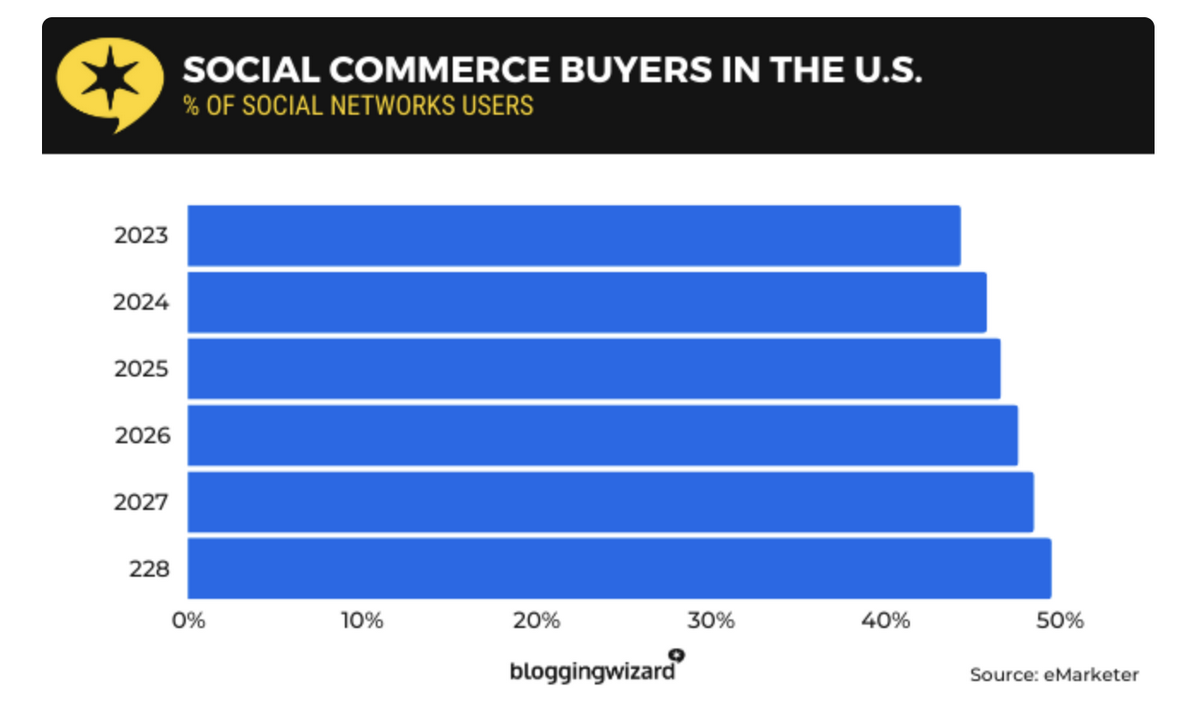
Facebook leads the way, influencing more than 60% of US shoppers to make a purchase within or outside the platform (E-Marketer). By mid-2025, Facebook has +3 billion users worldwide, and it’s estimated that Facebook Marketplace alone has 1.1 billion users (CNBC) and 250 million sellers (Capital One Shopping).
Specifically, 77.7% of Facebook shoppers have purchased from Facebook Marketplace, compared to 14.2% from Facebook Shop and 8.1% from Facebook Messenger (Capital One Shopping).
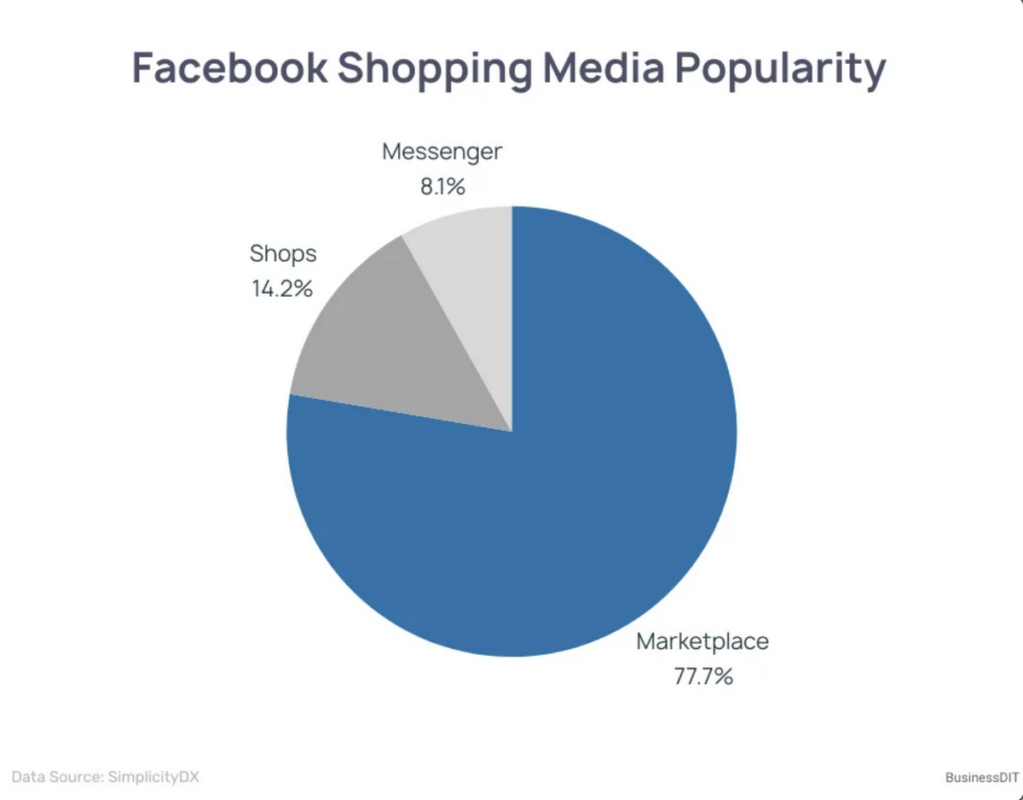
Facebook is followed by TikTok, influencing more than 35% of shoppers to buy an item (within or outside the platform), Instagram (34.3%), YouTube (26.4%), and Pinterest (13.5%), among others.
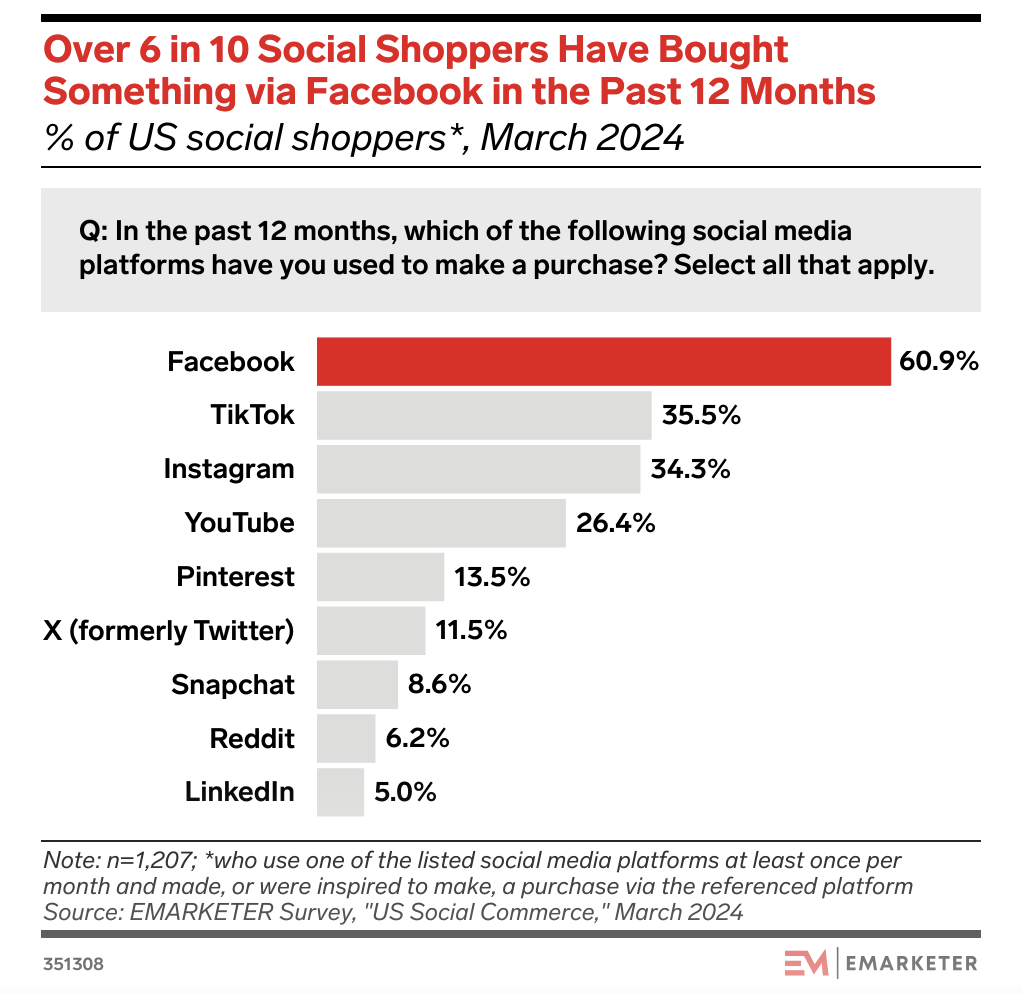
But what happens with built-in marketplaces? In that case, Facebook Marketplace still leads, with 50%+ of market share, followed by Instagram, with 15.81%, Facebook Shop, with 9.54% (all three part of the Meta ecosystem), and TikTok, with 9.34% (Business Dasher).
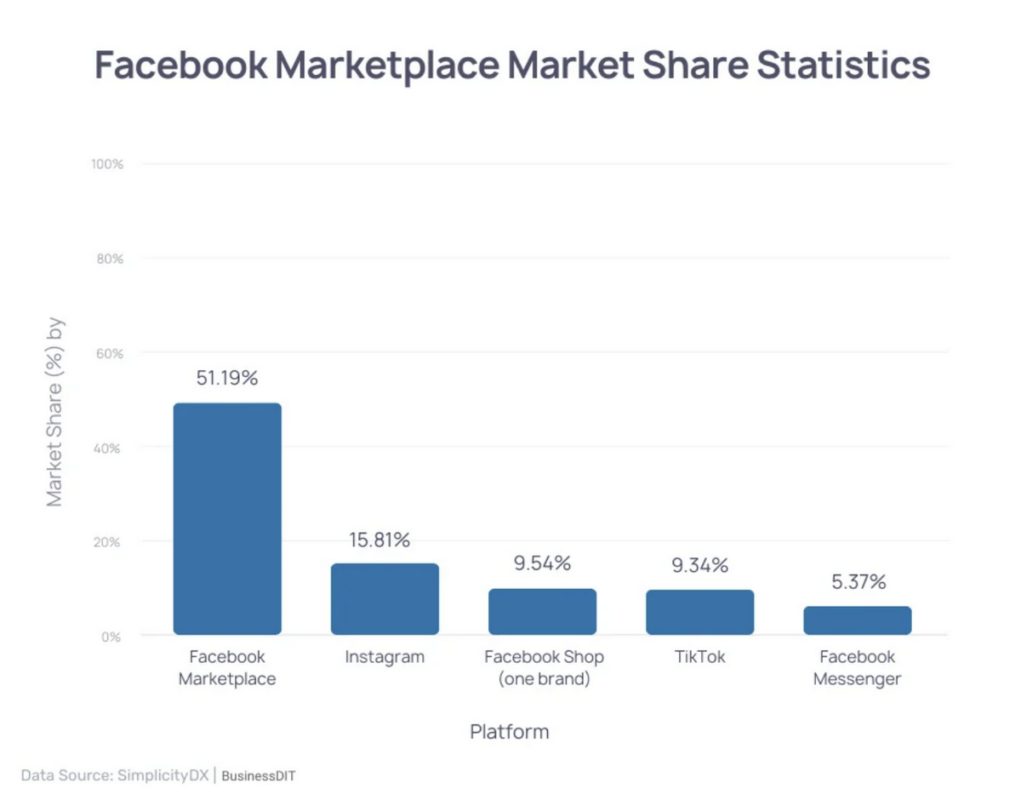
And talking about TikTok, this is another platform to pay attention to, with quick growth since TikTok Shop was launched in 2023. It’s estimated that it has around 500,000 sellers in the US (Bloomberg) and 200,000 in the UK (TikTok), the majority of which are SMBs (small to medium businesses).
But what’s even more interesting is that this is Gen Z’s favorite social commerce app. According to E-Marketer, 51.2% of Centennials made a purchase on this channel at least once, vs 24.9% of Millennials.
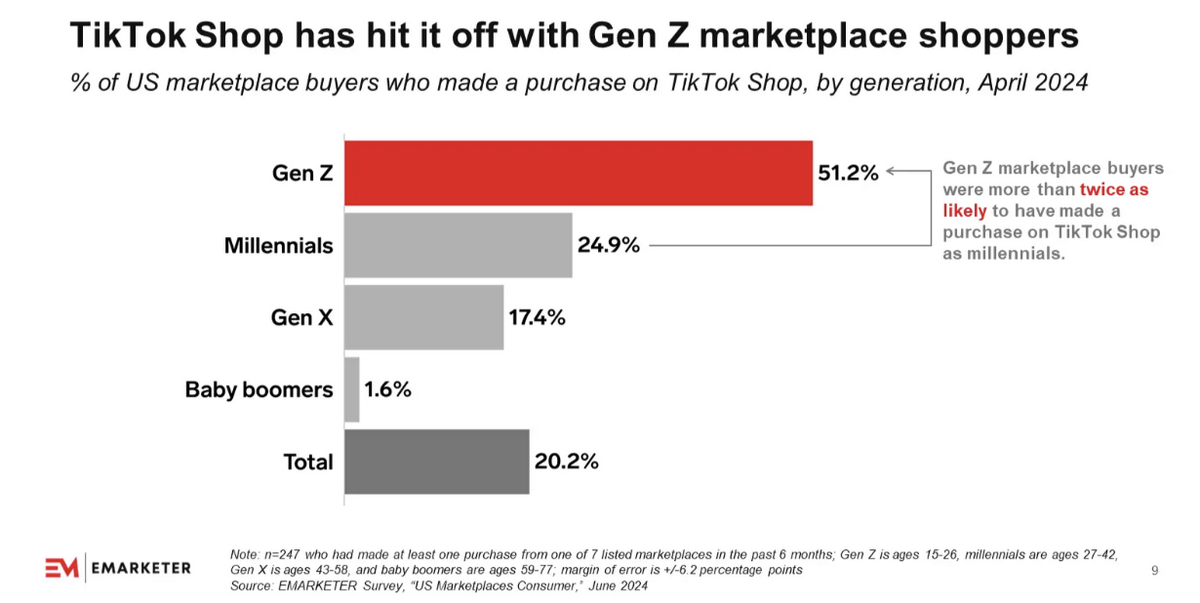
Since 2024, TikTok Shop has expanded to other markets in Europe (like Spain, Ireland, Italy, France, and Germany) and Latin America (Brazil and Mexico), with a total of 70 million products (TikTok).
Specifically, in the US, TikTok Shop sales increased by 120% (TikTok), and it is reported that 43.8% of TikTok users in the US purchased from TikTok Shop in 2024 (E-Marketer).
According to official statistics, the number of buyers has increased by 131% in the UK, and revenue has increased by 180%. This makes TikTok Shop the fastest-growing online retailer nowadays.
💡 Pro Tip: AutoDS integrates with most of these selling channels and platforms, letting you manage multiple stores in one dashboard, sync inventory and prices automatically, and fulfill orders hands-free. No juggling between stores.
Dropshipping Marketing Statistics
But social media channels aren’t just selling points. They are also essential for dropshipping marketing. It’s estimated that dropshipping stores with at least one social media channel can generate 32% more revenue (BigCommerce).
SEO (Search Engine Optimization) can also power up sales and revenue. Organic search drives 53% of website traffic for businesses (BrightEdge), and a solid content strategy can drive 40% more revenue per customer (Demand Metric). Moreover, organic search leads in conversion rates, with 14.6% on average (OpenSend).
Paid search is not far, driving 33% of e-commerce traffic (OpenSend). This makes organic dropshipping more cost-effective, but the mix of organic and paid channels makes up 68% of website traffic for e-commerce stores.
And the remaining 32% of traffic? It traces back to direct visits, social media, email marketing, and referrals (BrightEdge Research).
Lastly, there’s influencer marketing. According to Influencer Marketing Hub, this industry is expected to reach $32 billion by the end of 2025, and 85% of marketers believe this is an effective form of marketing.
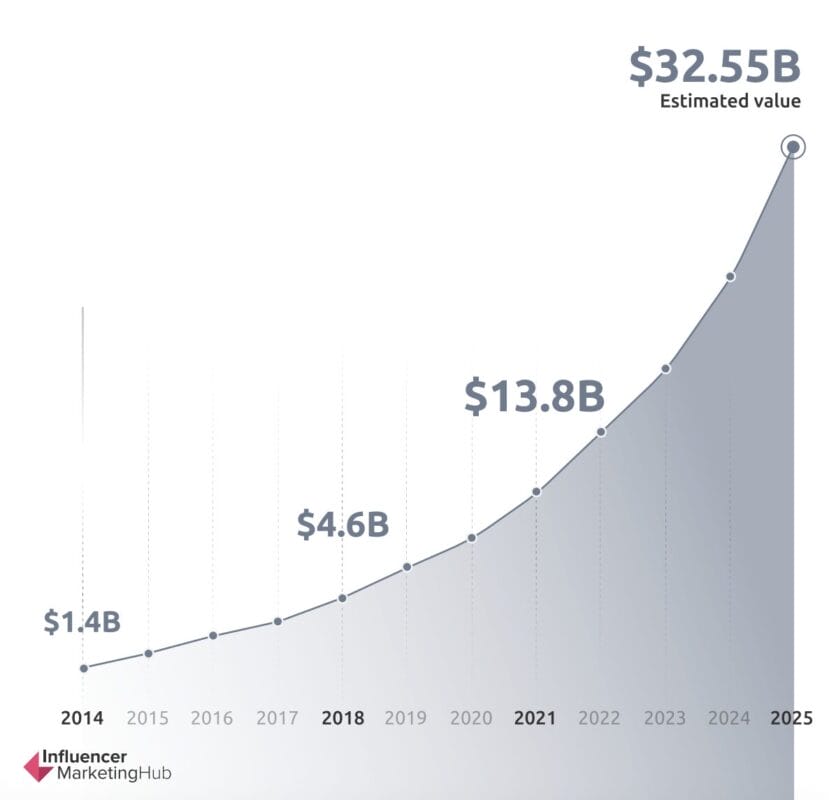
Moreover, according to the same source, 35.6% use influencer marketing for driving sales, followed by awareness (24.4%), user-generated content (18.9%), and community building (12.4%).
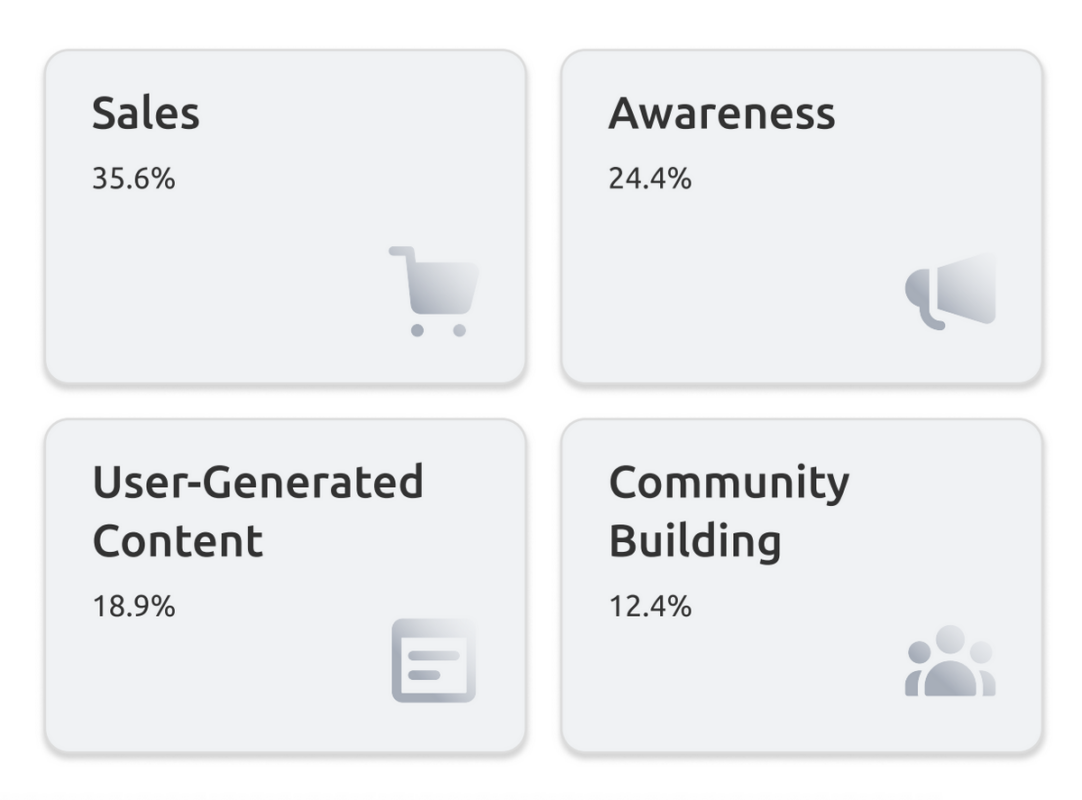
Dropshipping Challenges & Risks Statistics
Every business has its hurdles. And dropshipping is no exception. Returns, fraud, cart abandonment, you name it. Let’s see some of the main challenges dropshippers can face.
According to 84% of dropshippers and online sellers, the main challenge when selling online is finding the right suppliers (Yaguara). To tackle that, 38% of sellers turn to dropshipping platforms (like AutoDS) to source products, find suppliers, and manage supplier communication (Global Growth Insight).
Another major hurdle is returns. The difference between physical stores and e-commerce shops is pretty significant: while the first ones experience an average return rate of 8.8%, return rates for online stores can reach up to 30% (OpenSend).
This number goes even higher for the Fashion & Clothing niche, with 88% consumers having returned clothing orders at some point (Statista). In fact, 56% of all e-commerce returns came from this niche alone (OpenSend). This is due, mainly, to sizing issues.
Other niches with high returns rates are: Electronics, with 43% of consumers having returned an order, Home & Garden, with 24%, and Health & Beauty, with 21%, among others.
💡 Pro Tip: Want to handle returns like a breeze? With AutoDS, you can automate return requests, sync tracking updates, and keep everything managed in one single dashboard. This way, customers stay happy (and so do you).
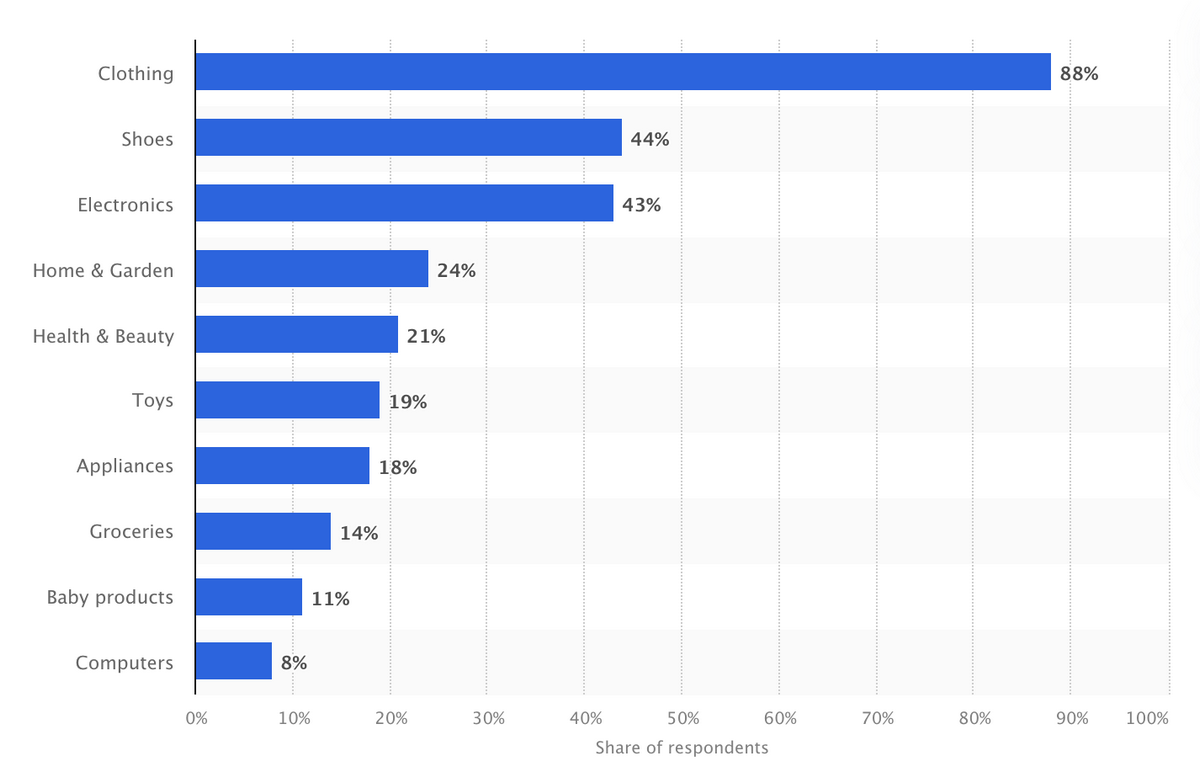
Disputes, chargebacks, and fraud are other huge things to consider when selling online. There can be around 230 million chargeback disputes a year, and out of all of them, sellers only win around 45% (PayCompass).
What’s even more complicated is that 53% of cardholders prefer to dispute a charge with their banks instead of the seller (PayCompass). The problem with chargebacks is that when they reach a certain rate, the seller can face penalties, depending on the platform they’re selling on. This happens because 81% of buyers think it’s easier to contact the bank than the seller to arrange the refund.
💡 Pro Tip: To avoid disputes and chargebacks, make sure to include easy ways to contact you, clear return and refund policies, realistic shipping times, and automatic tracking updates so customers always know where their order is.
The most affected niches by this are…
- Education – Average chargeback rate of 4.79%
- Travel – Average chargeback rate of 4.68%
- Digital goods – Average chargeback rate of 3.62%
- Gaming – Average chargeback rate of 3.41%
- Health and beauty – Average chargeback rate of 2.73%
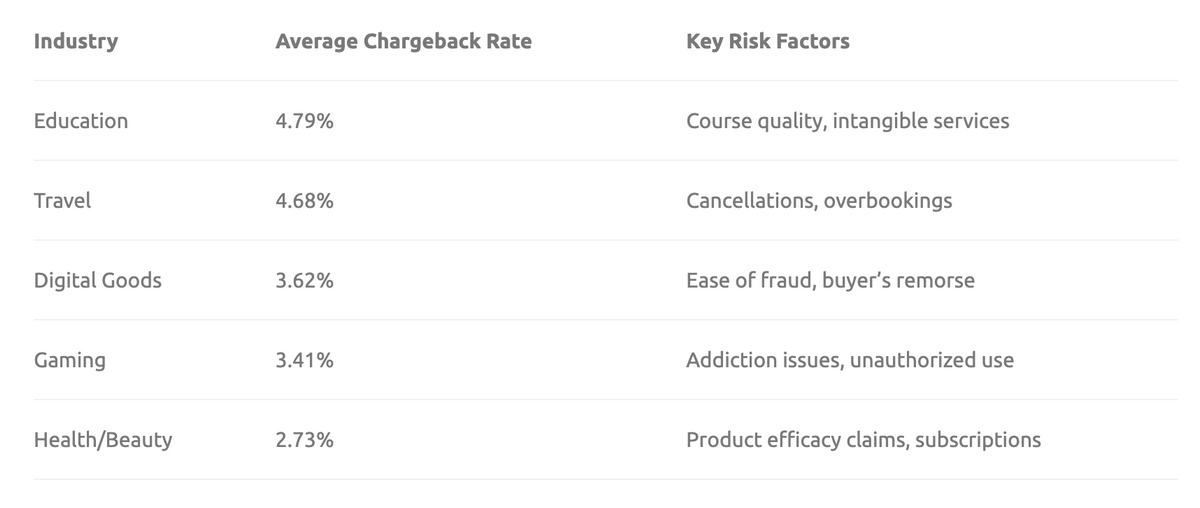
These hurdles make it hard for dropshippers to continue their business in the long term. While there isn’t an exact metric on how many dropshippers actually fail or succeed, it is estimated that the average success rate of a dropshipping business is between 10% and 20% within the first year (AppScenic). Moreover, according to Shopify, only 5%-10% of online stores are actually successful.
Don’t let your store become part of the 80%-90% that give up early. With AutoDS, you can automate the hardest parts of dropshipping, from pricing and fulfillment to returns 👉 Start today for just $1
Future Dropshipping Trends & Projections
Now, let’s gaze a bit into the crystal ball. As we’ve already established, dropshipping is expected to continue growing the rest of the decade, reaching $1.254 trillion in revenue by 2030, at a 22% CAGR (Grand View Research).
But what’s next for dropshipping? First, Print-on-demand (POD) is already booming and will continue to do so with massive growth. By 2024, the POD market reached $8.93 billion, and it’s expected to escalate to $57.49 billion by 2033, at a 23.3% CAGR (Grand View Research).
Fast shipping will continue to be a priority for online shoppers. By 2027, research estimates that 35% of urban buyers will expect same-day delivery for orders under $50 (Red Stag Fulfillment).
But a new demand is slowly emerging: sustainability. According to Shopify…
- Around 64% of buyers now consider environmental impact as an important factor in buying decisions.
- 80% are even willing to pay more (around 10% extra) for eco-friendly items.
- 28% of consumers are ok with a slower delivery for a reduced carbon footprint (Red Stag Fulfillment), showing how important this is for them.
Finally, there’s artificial intelligence. Everyone knows it and everyone uses it. And that’s not going to stop. By 2025, 33% of sellers have fully implemented this technology into their e-commerce business, and another 47% are experimenting with it for some tasks. Only 3% have no plans to integrate it at all (CapitalOne Shopping).
The reasons behind its massive adoption are clear. 35% of abandoned carts are recovered through AI chat assistance, while purchases happen 47% faster when guided by AI (HelloRep). The picture is clear. When done right, AI implementation = more revenue.
Frequently Asked Questions
How big is the dropshipping market in 2025?
According to research, the dropshipping market is expected to reach $464 billion by the end of 2025, and is projected to increase to $1.254 trillion by 2030, growing at a CAGR of around 22%.
What percentage of online stores use dropshipping?
Industry data shows that in 2025, an average of 27% of online stores use dropshipping for fulfillment. Specifically, 34% of sellers use dropshipping as their fulfillment method on Amazon, and 12.8% on Shopify.
What are the average profit margins in dropshipping?
In dropshipping, margins typically range from 10% to 30%, depending on niche, supplier, and marketing. This can even go higher with smart pricing strategies, high-converting niches, reliable suppliers, and automation tools like AutoDS.
Is dropshipping still profitable in 2025?
Yes, dropshipping is still profitable in 2025. Beginners can earn $1,000+, while seasoned dropshippers can make more than $10,000. The stats prove steady growth. That said, success depends on niche selection, marketing, and supplier quality.
Start Your Dropshipping Journey with AutoDS
We’ve walked you through the numbers, from market growth forecasts and consumer behavior shifts to platform stats and the risks most dropshippers face. The takeaway is clear: dropshipping is no longer a side hustle trend. It’s a multi-billion-dollar industry with real opportunities for those who do it right.
The future belongs to sellers who embrace fast shipping, eco-conscious products, and AI-driven automation. That’s where dropshipping platforms come in.
AutoDS simplifies your workflow, automates repetitive tasks, helps you source products across multiple niches, and connects you with top local and global suppliers to help you scale smarter.
If you want to know more about dropshipping and how to get started, here are a few reads you might find helpful:
APA Citation (7th Ed.)
Rainero, L. (2025, October 3). Essential Dropshipping Statistics You Need To Know In 2025. AutoDS. https://www.autods.com/blog/dropshipping-tips-strategies/dropshipping-statistics/






